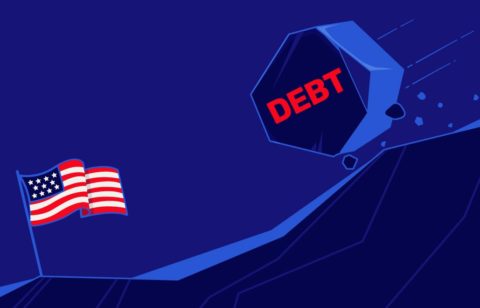Do you have a budget? If not, you might want to create one—especially if you owe money. Budgeting is one of the best ways to reduce your expenses, which can eventually help you pay down that debt. When done correctly, it can be your first step toward living a less stressful and more fulfilling life.
Beginning To Budget
Creating a budget doesn’t have to be complicated. In fact, it can be done in just three steps:
- Determine monthly income and spending.
- Set realistic goals for saving and paying off debt.
- Track your spending to ensure you’re staying within your limits.
Use Apps Or Software
The computer and the Internet have taken much of the sting out of budgeting. There are software programs and numerous budgeting apps designed to help you with everything from tracking your spending to paying your bills on time.
One example is Mint, a website and smartphone app. After you enter information from your checking and savings accounts, credit cards, personal loans and investments, Mint takes over from there. You can view all your finances at a glance and receive email alerts if you overspend in any category.
One drawback to using an app or your computer to monitor your spending is that it can make you a bit obsessive. It’s important to first figure out which categories of spending you could and should cut. Focus on these, and then you can pay more attention to your other financial details.
Watch Out For “Money Leaks”
“Money leaks” happen when small expenses add up to large amounts over time. For example, spending $5 on coffee twice a week may not seem like a lot. However, that can add up to about $40 per month.
Other examples include disposable products, brand-name products, unused gym memberships, and subscriptions to streaming services. Subscription management apps like Truebill or Hiatus can monitor your subscriptions to determine if there are any you should consider canceling. Once you have identified any “money leaks,” you can save a lot by eliminating them.
People Also Read
Don’t Spend Beyond Your Limits
Spending more money than you have can become a dangerous game. But if you’ve done this, you’re not alone. A 2022 survey reported that approximately 34 million Americans had spent more than they earned in the previous six months amid inflation. The survey also showed that over half of respondents reported they had less than $5,000 in savings. In addition, 3.7% of households with incomes over $200,000 said their debt was increasing.
Overspending can add to your debt, making it more difficult to pay off lenders. Spending less than you earn can help you grow your savings in the long run. While it may seem impossible, it can be done. Click here to learn how.
Try not to spend more than 80% of your income. Use the other 20% (or more) to save for your big-ticket items or to pay off your debts. Of course, the amount you choose to sock away will depend on your unique financial situation; however, it’s best to save as much as you can.
Taking Control Of Your Debt
If you’re laboring under a huge mountain of debt, budgeting alone may not be enough to help you get out from under it. Stronger measures may be required such as consumer credit counseling, a debt consolidation loan, or debt negotiation. These options can help you long-term and enable you to take back control of your finances and your life.
You can also work with a professional debt settlement company to help you pay off your debt for less than you owe—and in a shorter amount of time. In fact, a good company is usually able to reduce debts by thousands of dollars a lot quicker than other debt repayment options.
Let’s face it, many people cringe at the word “budget.” But it will become second nature as you continue to practice tracking your money. And as the savings start to add up, you’ll understand why so many advisors recommend this method to their clients.









